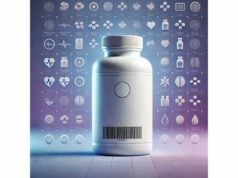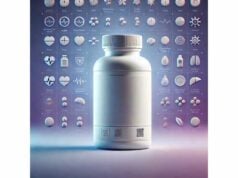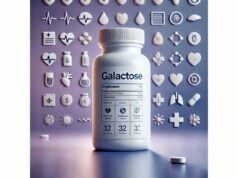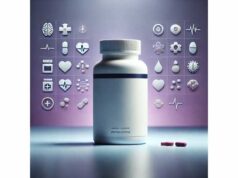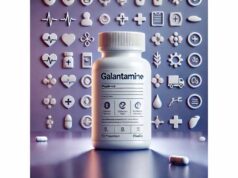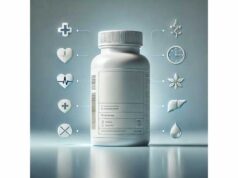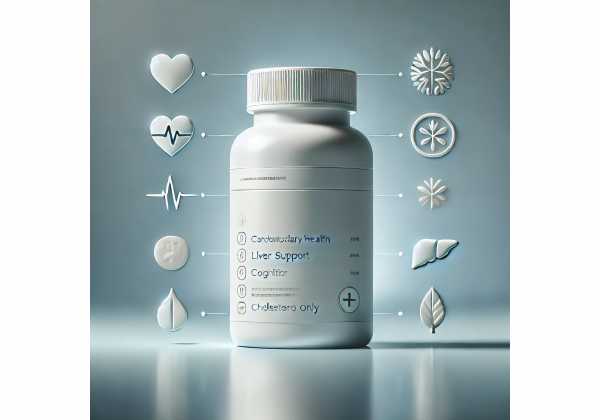
Galium aparine—better known as cleavers, goosegrass, or catchweed—is a springtime hedgerow herb with tiny hooks that cling to clothing and fur. In traditional European and Asian practices, it is brewed or juiced as a gentle diuretic and “lymph-supportive” tonic, and used topically for minor skin irritation. Modern lab and animal studies point to a rich profile of iridoids, chlorogenic acids, and flavonoid glycosides that may provide antioxidant and immunomodulatory activity. While these signals are intriguing, human clinical evidence remains limited. This guide translates the science and the tradition into practical steps: what cleavers might help with, how to prepare and dose it wisely, what to track, and who should avoid it. If you are exploring Galium aparine for urinary comfort, puffy lymph nodes after a cold, or as a seasonal cleanse, you will find realistic expectations and a clear, safety-first plan.
Quick Facts
- Mild diuretic and soothing herb traditionally used for urinary and skin support.
- In vitro and animal data suggest immunomodulatory and antioxidant activity; high-quality human trials are scarce.
- Practical adult range: 2–6 g dried herb per day (tea) or ~2–4 mL tincture up to three times daily; use for 2–8 weeks before reassessing.
- Avoid in pregnancy, significant kidney or liver disease, and with dehydration or concurrent strong diuretics unless supervised.
Table of Contents
- What it is and does it work?
- Benefits you can reasonably expect
- How to use it and dosage
- What to track and how
- Side effects and who should avoid
- Evidence snapshot and research gaps
What it is and does it work?
What it is. Galium aparine (Rubiaceae) is an annual with square stems, whorled leaves, and bristly hooked hairs that help it climb. Herbalists typically use the fresh or freshly dried aerial parts—stems, leaves, and tender tops—prepared as a cold or hot infusion, juice (succus), tincture, or topical wash. The herb is rich in iridoid glycosides (e.g., monotropein, asperulosidic acid), chlorogenic acids, and flavonoid glycosides of quercetin and kaempferol. These molecules are frequently associated with antioxidant, astringent, and mild anti-inflammatory effects in plant medicines.
How it is thought to work. Laboratory and animal models suggest several complementary actions:
- Immunomodulation. Water and ethanol extracts can stimulate lymphocyte transformation and enhance natural killer (NK) cell activity in immune-suppressed mice. Polysaccharide fractions and phenolic complexes both contribute to this effect in vitro. These findings align with the herb’s traditional role during convalescence, swollen nodes after infection, or seasonal transitions.
- Antioxidant activity. Cleavers infusions and extracts scavenge reactive species (e.g., hydrogen peroxide, nitric oxide) and show phenolic-driven antioxidant capacity. Antioxidants may help temper local inflammatory cascades, especially when the herb is used topically.
- Skin support. Whole-plant extracts demonstrate antimicrobial effects against common skin flora and promote scratch-wound closure in cell models, supporting historical use as a gentle wash for minor, non-serious skin irritations.
- Diuretic and “drainage” actions. Traditional texts emphasize mild diuresis (increased urine flow). While direct clinical metrics are sparse, many users experience more frequent, comfortable urination during short courses—part of why cleavers is taken in the morning and early afternoon.
What this does not mean. Bench and animal results do not guarantee symptom relief in people. Cleavers is not a stand-alone treatment for urinary tract infections, dermatologic disease, or immune disorders. There are no robust trials showing reductions in infection rates, faster recovery from illness, or disease modification. The herb’s best role is as adjunct support within a broader plan: hydration, diet, rest, and appropriate medical care.
Bottom line on effectiveness. Expect modest, gentle effects—particularly a diuretic, soothing profile and potential assistance with minor, self-limited skin discomforts when used as a wash. For immune support, the evidence is preliminary; if you experiment, track energy, frequency of mild colds, and post-illness lymph node tenderness over several weeks rather than expecting immediate, dramatic changes.
Benefits you can reasonably expect
Urinary comfort (mild diuretic). Many people use cleavers for “spring cleaning” or to ease a sense of urinary sluggishness. Practically, that can look like slightly increased urine output and more comfortable voiding during a 2–4-week course. Combine with steady hydration (e.g., 250–500 mL water spaced through the day) and limit evening doses to avoid nighttime bathroom trips. Cleavers is not an antibiotic; if you suspect a UTI (burning, urgency, fever), seek medical care.
Skin calm (topical). As a gentle astringent, cleavers can be applied as a cool compress or rinse for minor, non-infected skin complaints—think occasional heat rash, shaving irritation, or post-workout chafing. Traditional practice favors fresh plant preparations or a cooled infusion. Because evidence is preclinical, set expectations at the level of comfort and soothing—not “cure.” Discontinue if the skin worsens or if you suspect infection.
Post-illness recovery. Some users reach for cleavers when lymph nodes feel slightly puffy after a cold. Given its immunomodulatory and antioxidant signals in research models, a time-limited trial (2–3 weeks) may be reasonable if you are otherwise healthy. Pair with extra sleep, protein-forward meals, and light movement.
Seasonal “reset.” As a low-intensity “alterative,” cleavers is often folded into short seasonal routines alongside hydration, leafy vegetables, and walking. While “detox” is an imprecise term, consistent habits that support the body’s own elimination pathways—hydration, fiber, sweating through activity—matter more than any single herb. Think of cleavers as a pleasant adjunct, not the engine.
What benefits are unlikely. There is no reliable human evidence that cleavers reduces body weight, treats chronic dermatologic disease, or prevents infections. Anti-cancer findings are restricted to cell studies; these do not justify therapeutic use for cancer. If headlines promise sweeping immune or skin cures, read critically.
Who may notice the most. People who are generally well, adequately hydrated, and physically active often report the clearest “gentle diuretic + soothing” effect from short courses. Those who are already taking strong diuretics, are prone to dehydration, or have kidney concerns should avoid unsupervised trials.
Practical benefit window. If used for urinary comfort or seasonal support, evaluate after 14–21 days. For topical use, reassess after 3–7 days. Stop if there is no clear benefit, if adverse effects appear, or if medical symptoms evolve (e.g., fever, flank pain, spreading rash).
How to use it and dosage
Plant part and forms. Use the aerial parts (leaves, stems, tender tops). Choose one form to start:
- Tea (infusion): Hot infusion (steep 10–15 minutes) or cold infusion (steep several hours).
- Tincture / liquid extract: Alcohol or glycerin extracts; strengths vary (e.g., 1:5 at 25% alcohol, 1:3 at 45%).
- Fresh juice (succus): Expressed from fresh plant; traditionally diluted.
- Topical rinse or compress: Cooled tea applied with clean cloth; for unbroken skin only.
Adult starting ranges (practical, conservative):
- Tea: 2–6 g dried herb per day, split into 1–3 servings. If sensitive, start at 1–2 g/day for a week.
- Tincture (1:5 to 1:3): 2–4 mL, up to three times daily. Begin with 2 mL once daily for several days, then titrate.
- Fresh succus: 5–15 mL up to three times daily, diluted in water.
- Topical: Prepare a fresh batch each day; apply once or twice daily for up to 7 days, then pause.
Five-step setup for a first trial (2–4 weeks):
- Pick one form (tea or tincture).
- Set a daily window (e.g., 8 a.m. and 1 p.m.). Avoid late-evening dosing to protect sleep.
- Hydrate: Aim for ~30–35 mL/kg/day total fluid unless restricted by your clinician. Cleavers’ diuretic effect “borrows” from your fluid intake.
- Track (see the next section) one or two relevant outcomes—urination comfort, bloating scores (0–10), skin comfort, or post-cold node tenderness.
- Reassess at day 14. If helpful and well tolerated, continue to day 28, then cycle off for at least 1–2 weeks and reassess whether you still need it.
Preparation pointers.
- Cold infusion (very popular for fresh cleavers): Lightly crush a small handful of fresh herb (or 2–3 g dried) in a jar, cover with 250–500 mL cool water, steep 4–8 hours, strain, and sip through the day.
- Hot infusion (dried herb): Use 1–2 g per 250 mL just-boiled water; cover to retain aromatics; steep 10–15 minutes; strain.
- Tincture math: With a 1:5 extract, 2 mL delivers the soluble equivalent of roughly 400 mg raw herb; a 1:3 extract is more concentrated. Start low; potency and composition vary by maker.
Combining with other agents. Avoid stacking multiple diuretic or “detox” herbs. If you already take diuretics, lithium, or nephrotoxic medications, do not self-experiment—speak with your clinician first. For skin use, avoid combining with strong essential oils or acids that may irritate.
When to stop immediately. Stop and seek care if you develop UTI warning signs (fever, chills, flank pain), rash worsens or drains pus, you feel dizzy or faint from dehydration, or you notice dark urine and fatigue suggestive of liver issues.
What to track and how
Clear tracking turns a vague herbal experiment into a useful, low-risk trial. Choose one primary outcome and one safety check, then keep everything else constant (diet, fluids, exercise) for two weeks.
If your goal is urinary comfort:
- Primary outcome: A 0–10 daily “urinary ease” score (0 = poor stream/irritation, 10 = very comfortable), plus number of daytime voids.
- Supportive metrics: Bloating (0–10) and morning body weight change (± kg) to flag fluid shifts.
- Safety check: Signs of dehydration (thirst, dark urine). If present, increase water or reduce dose.
If your goal is post-cold node tenderness:
- Primary outcome: Palpable tenderness score (0–10) at the same time daily.
- Supportive metrics: Energy rating (0–10), step count or gentle activity minutes.
- Safety check: Any increase in node size, redness, warmth, fever, or night sweats—seek medical review.
If your goal is skin comfort (topical only):
- Primary outcome: Itch or sting score (0–10) before and 30–60 minutes after application.
- Supportive metrics: Photo log in consistent lighting to avoid perception bias.
- Safety check: Stop if the area becomes more inflamed, weepy, or painful; topical herbs are for minor, self-limited issues only.
Seven troubleshooting tips:
- No effect after 14 days? Increase the tea by 1–2 g/day or tincture by 1–2 mL/day (split dose), or try cold infusion if you used hot infusion.
- Too many bathroom trips? Reduce dose by 50% or shift more to the morning.
- Stomach upset? Take with food, switch to tea, or reduce tincture alcohol by diluting in hot water and letting it cool.
- Skin feels tight after rinses? Shorten contact time or switch to a one-time daily compress.
- You already drink little water. Add 250 mL per day for the first week; diuretic herbs need input to work comfortably.
- Stacking too much. If you’re also using dandelion, nettle, or caffeine, simplify to one herb at a time.
- Travel or heat wave week. Postpone trials during high heat or high output days; dehydration risk rises.
A note on expectations. Galium aparine is not a quick fix; its value shows up as consistent, small improvements. If you require rapid relief, you may need medical treatment instead of—or in addition to—herbal support.
Side effects and who should avoid
Typical tolerability. Cleavers is widely considered gentle at modest doses. The most common issues are increased urination, mild stomach upset, or looser stools as you adjust. These effects usually settle with dose reduction, taking with food, or switching from tincture to tea.
Dehydration and electrolytes. Any diuretic action can contribute to fluid loss. Warning signs include thirst, headache, dark urine, and lightheadedness. Counter with added water (sipped, not chugged), a pinch of electrolytes during heavy sweating, and earlier dosing hours. If you have a history of orthostatic dizziness or low blood pressure, use extra caution.
Kidney and liver cautions. People with chronic kidney disease (especially reduced GFR), a history of kidney stones, or significant liver disease should avoid unsupervised use. A published case report links a multi-herb “detox” tea (containing cleavers among several ingredients) with acute cholestatic liver injury. While causality to cleavers alone is unproven, the case underscores the risk of concentrated multi-herb blends and the importance of pausing at the first sign of trouble (fatigue, dark urine, jaundice, right-upper-quadrant pain).
Medication interactions.
- Diuretics (prescription or OTC). Additive effects may increase dehydration or electrolyte imbalance.
- Lithium. Shifts in fluid balance can affect lithium levels; do not change fluid status or introduce diuretics without clinician guidance.
- Nephrotoxic drugs (e.g., high-dose NSAIDs, certain antibiotics). Extra caution; avoid dehydration.
- Topical therapies. When using cleavers rinses, avoid simultaneous application of strong acids, retinoids, or alcohol-rich toners on the same area.
Allergy and sensitivity. Cleavers belongs to the Rubiaceae family (coffee family). Allergic reactions are uncommon but possible. Discontinue if rash, hives, swelling, or wheezing develops.
Special populations.
- Pregnancy: Avoid; no safety data and diuretic effects are not desirable in pregnancy.
- Breastfeeding: Insufficient data. If considering topical use on small areas of unbroken skin, keep away from the breast and consult a lactation professional.
- Children and adolescents: Avoid routine internal use due to limited data; topical use should be minimal, short, and supervised.
- Older adults: Start at the lowest dose, prioritize hydration, and monitor for dizziness or nocturia.
Surgery or acute illness. Hold cleavers during acute vomiting/diarrhea, fevers, or in the week before surgery to simplify fluid management.
When to seek care immediately. Fever, flank pain, persistent urinary burning, spreading or painful skin lesions, jaundice, or severe dizziness are red flags for medical evaluation. Herbal trials should never delay appropriate diagnostics.
Evidence snapshot and research gaps
What recent studies show. Research attention to Galium aparine has increased, with several open-access studies worth noting:
- Immunomodulation in animals: In a cyclophosphamide-suppressed mouse model, aqueous cleavers extract dose-dependently improved spleen indices, splenocyte proliferation, NK cell activity, and cytokine outputs (IL-6, TNF-α, IFN-γ). This supports a plausible immune-supportive role—but it remains preclinical.
- Infusion chemistry and in-vitro immunology: An infusion (tea-like) preparation demonstrated significant lymphocyte blast transformation and antioxidant activity, with both polysaccharide and phenolic fractions contributing. The work also characterized thirteen major compounds, including iridoids and multiple chlorogenic acids, aligning with traditional water preparations.
- Skin-related bench work: A hydroalcoholic extract showed antimicrobial activity against common skin bacteria and improved scratch-wound closure in cell models, suggesting a mechanistic basis for traditional topical use in minor irritations.
- Safety signals: A 2022 case report documented cholestatic liver injury after use of a multi-herb detox tea that listed cleavers among ingredients. Single-case reports cannot establish causation, but they rightly encourage caution with concentrated blends and long, unsupervised regimens.
What is missing.
- Human trials. We need randomized, controlled human studies measuring urinary symptoms, fluid balance, and quality-of-life outcomes; topical trials for minor skin comfort; and prospective safety monitoring.
- Standardization. No consumer-facing standards exist for iridoids or chlorogenic acid content in cleavers products; batch variability is likely.
- Dose–response data. Traditional ranges are broad. Dose-finding studies could anchor practical guidance and reduce guesswork.
- Population-specific safety. Data are especially thin for older adults, those with renal or hepatic conditions, and during lactation.
How to weigh the evidence today. Cleavers stands on a credible traditional footprint with supportive preclinical data, but lacks clinical confirmation. A fair conclusion is that Galium aparine can be tried as a short, low-risk adjunct by healthy adults who can monitor effects and stop promptly if not helpful, while those with medical conditions should wait for stronger evidence or seek guided care.
Bottom line. If you value gentle herbs and structured self-experiments, cleavers can earn a place in a short seasonal routine—hydration first, dose low, track outcomes, reassess at two to four weeks, and keep your clinician in the loop.
References
- Bringing back Galium aparine L. from forgotten corners of traditional wound treatment procedures: an antimicrobial, antioxidant, and in-vitro wound healing assay along with HPTLC fingerprinting study 2024
- Immunomodulatory Activity and Phytochemical Profile of Infusions from Cleavers Herb 2020
- Immuno-Enhancing Effects of Galium aparine L. in Cyclophosphamide-Induced Immunosuppressed Animal Models 2024
- Drug-Induced Liver Injury from Herbal Liver Detoxification Tea 2022
Disclaimer
This guide is informational and is not a substitute for personalized medical advice, diagnosis, or treatment. Galium aparine may affect hydration status and interact with medications. Do not use if you are pregnant, have significant kidney or liver disease, or take diuretics or lithium unless advised by a qualified healthcare professional. If you develop warning signs—fever, flank pain, spreading rash, severe dizziness, jaundice—stop the herb and seek medical care. If this article helped you, we’d appreciate your support: please consider sharing it on Facebook, X (formerly Twitter), or your preferred platform, and follow us for future evidence-informed guides.

